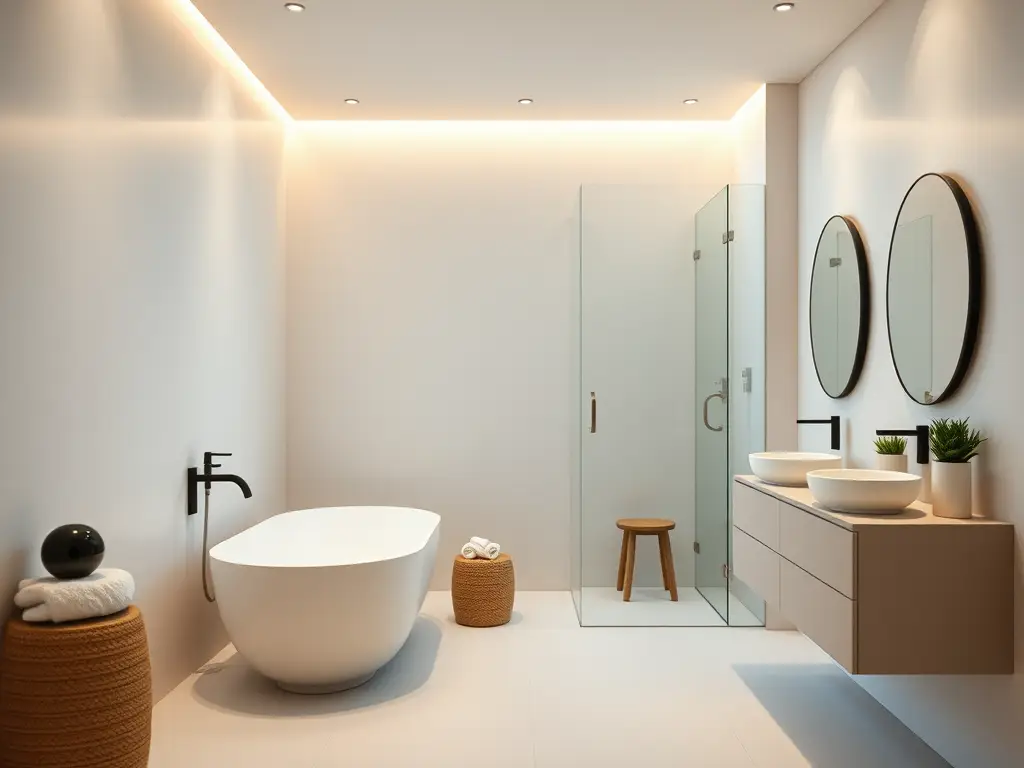Planning Your Budget and Setting Realistic Goals
Before embarking on any renovation project, establishing a clear budget is crucial for a successful outcome. To begin, evaluate your current financial situation. This assessment will involve reviewing your income, savings, and any debts to understand how much you can realistically allocate towards your renovation expenses. A comprehensive financial analysis allows you to gauge what is feasible, ensuring you do not overextend yourself financially during the renovation process.
Next, prioritize renovation tasks based on both necessity and the potential return on investment. Consider which renovations will enhance the functionality of your space or significantly contribute to its overall value. By identifying essential projects, you can focus on what should be addressed first, thereby creating a structured plan for your budget. Furthermore, establishing realistic goals regarding what can be achieved within your budget is imperative. Setting achievable expectations helps reduce the likelihood of disappointment as the project progresses.
Employing tools such as spreadsheets or budgeting applications can significantly streamline the budgeting process. By tracking expenses, you can allocate funds smartly across various renovation tasks. These tools provide an efficient way to monitor spending, ensuring that you stay within the overall budget. It’s also advisable to set aside a contingency fund, typically around 10-15% of the total estimated costs, to familiarize yourself with the possibility of unexpected expenses that may arise during the renovation journey.
Ultimately, planning your budget and setting realistic goals are foundational steps to achieving a successful renovation within your financial means. A methodical approach not only aids in maintaining control of your spending but also lays the groundwork for a truly transformational experience in your space.
Choosing Cost-Effective Materials and Resources
When it comes to renovating on a budget, selecting the right materials can significantly influence both the cost and the final aesthetic of your project. Cost-effective alternatives to traditionally expensive materials can provide the same visual appeal and durability without compromising your financial plan. Many homeowners have successfully transformed their spaces by being resourceful and exploring various affordable options.
Home improvement stores often carry a range of budget-friendly materials that can effectively replace high-end choices. For instance, instead of opting for granite countertops, consider quartz laminate, which offers a similar look at a fraction of the cost. Similarly, vinyl flooring can mimic the appearance of hardwood, providing a stylish and practical solution for your renovation while remaining budget-conscious.
Online marketplaces are another valuable resource for finding cost-effective materials. Websites such as Craigslist, Facebook Marketplace, and eBay often feature second-hand or surplus materials at discounted prices. Many sellers list items that are gently used or even brand new, making it possible to acquire high-quality products at a lower cost. Additionally, these platforms can connect you to local sellers, helping you save on shipping and transportation costs.
Salvage yards are also excellent places to search for unique and affordable materials. These yards often house reclaimed wood, vintage fixtures, and other interesting items that can add character to your renovations. Not only do these materials help you stay within your budget, but they also promote sustainability by repurposing what has already been produced.
It is essential to consider both durability and style when selecting materials. Ensure that the options you choose not only align with your aesthetic but can also withstand wear and tear over time. Utilizing cost-effective materials does not mean compromising on quality; rather, it allows you to achieve your renovation goals while keeping your finances intact.
DIY vs. Hiring Professionals: Making the Right Choice
When it comes to planning your renovation on a budget, a critical decision revolves around whether to undertake the task yourself or to engage professional help. Each approach has its own set of advantages and disadvantages, which can significantly impact both the quality of the outcome and the financial aspects of the project. Understanding these factors will guide you in making an informed choice that aligns with your skills and the complexity of the renovations.
Doing it yourself (DIY) is often appealing due to the potential cost savings and the personal satisfaction derived from creating something with your own hands. Many simple renovation tasks, such as painting, landscaping, or minor repairs, are well within the skillset of most homeowners. These types of jobs generally require minimal investment in tools and materials, making them a practical option for those seeking to renovate on a budget. However, it’s essential to accurately assess your level of expertise and available time, as complex projects—like electrical work or plumbing repairs—can become overwhelming and may lead to additional costs if not executed correctly.
On the other hand, hiring professionals can save time and provide peace of mind, particularly for intricate projects. Experienced contractors bring valuable skills, knowledge, and resources, ensuring a higher quality outcome that adheres to local codes and standards. Nonetheless, professional services can be expensive, and the challenge lies in finding reliable contractors who won’t strain your budget. Researching potential professionals through online reviews, personal recommendations, or local directories can yield trustworthy contacts, and many companies may offer flexible payment options or quotes that help manage costs effectively.
Ultimately, the decision should be based on a combination of your own skill level, the potential return on investment, and the complexity of the task at hand. Assessing these factors will guide you in choosing between DIY renovations or hiring professionals for a successful outcome.
Maximizing Small Changes for Big Impact
Renovating on a budget does not always require elaborate renovations or extensive financial investment. Small, thoughtful updates can lead to significant transformations within any space. One of the most effective methods to create a fresh environment is through rearranging existing furniture. This tactic can dramatically alter the perception of a room’s size and functionality. Consider experimenting with different layouts to find the best flow and arrangement that complements your lifestyle.
Paint is another powerful tool in budget renovations. A gallon of paint can breathe new life into a tired room, so selecting a modern color palette that resonates with your style can lead to instant revitalization. A feature wall, for instance, can set a tone while maintaining a budget-friendly approach. Even using left-over paint to touch up outdated cabinetry or moldings can yield impressive results.
Creative lighting can also play a transformative role in your home. Instead of relying solely on overhead lighting, think about incorporating a range of light fixtures such as floor lamps, table lamps, or string lights. This not only adds depth to the décor but also highlights architectural features or artwork, thereby maximizing the room’s overall ambiance.
Additionally, incorporating decorative elements such as throw pillows, rugs, or art pieces can showcase your personal taste and make each room feel refreshed. These small investments can dramatically impact the aesthetic without straining your financial resources. Case studies of successful budget makeovers frequently highlight simple tweaks, such as strategically placing mirrors to create the illusion of space or utilizing plants to bring a touch of the outdoors inside.
By focusing on these small, affordable modifications, you can effectively renovate your living space, achieving a new look and feel without overspending. Embracing creativity and resourcefulness is key to transforming your environment while staying within budget constraints.





